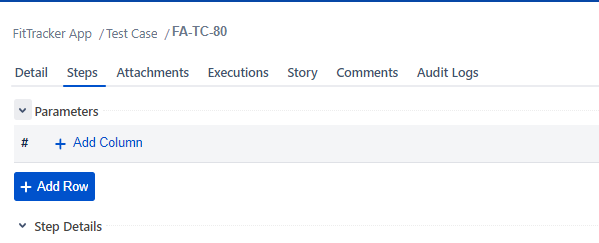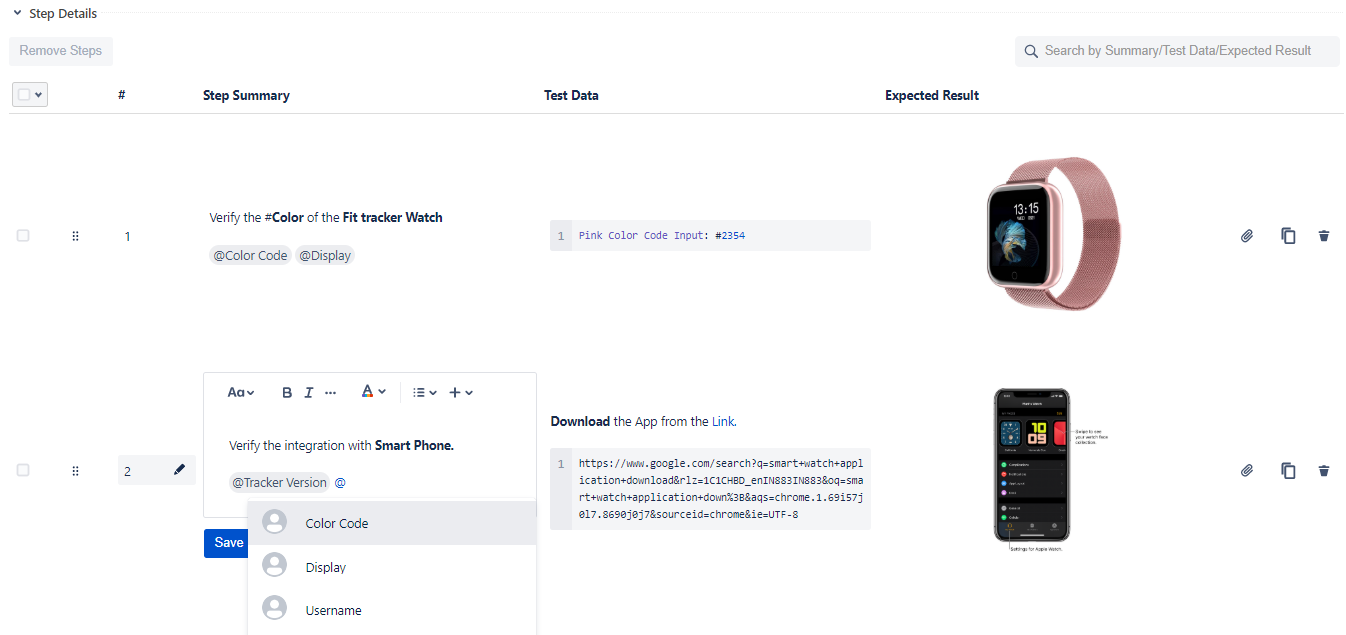| Table of Contents |
|---|
Parameters functionality allows testers to execute same test case multiple times with different data inputs; without having to create duplicate test cases. The functionality allows QA teams to store reusable test data in one centralized location. It also helps you to keep your test data consistent and manageable.
Example
The Modes need to be validated against respective applications.
...
Here, Application and Mode
| Color Code | Display | Bluetooth Versions | Tracker Version |
|---|---|---|---|
| 1234 | OLED | Bluetooth v4.0 | Tracker Series 5 |
| 1237 | LED | Bluetooth v4.5 | Tracker Series 3 |
| 1236 | MOLED | Bluetooth v4.3 | Tracker Series 1 |
| 1234 | OLED | Bluetooth v4.1 | Tracker Series 2 |
Here, Color Code, Display, Bluetooth Versions and Tracker Version are parameters with values.
The combination of parameter values creates a data set.
...
Parameters are added from Configuration > Project Configuration > Parameter.
Add Data Set
These added parameters are used in test steps as shown below.
1. Open the test case detail page.
2. Open the Steps tab. You can see the Parameters expandable section along with Step Details. To create a table of parameters, you need to add Columns and Rows. Columns will contain parameter names and rows will contain corresponding parameter values.
3. To add a column, click on Add Column.
A drop-down is enabled which has the list of parameters you entered in the Configuration section (Configuration > Project Configuration > Parameter).
4. Select one parameter for the column. One parameter can be used only once for column.
...
2. Open test case detail page and open the Steps tab. Parameters can be mentioned for Step Description, Input Data, and Expected Outcome.
3. To use parameter, write it in this syntax @parameter. When you press@ on your keyboard, the available parameters will populate.
The Step Details will look like below.
Execute Parameterized Test Cases
1. Once the test case with Parameters is ready, go to Test Cycle and link that test case with a test cycle.
2. Hover over the test cycle record, the Execute icon becomes visible.
3. Click on the Execute icon to navigate to the Test Execution Screen to run the test and record the status.
On the Test Execution Screen, you can see the Parameter Groups under Step Details. Each Parameter Group has its test steps under it.
...


